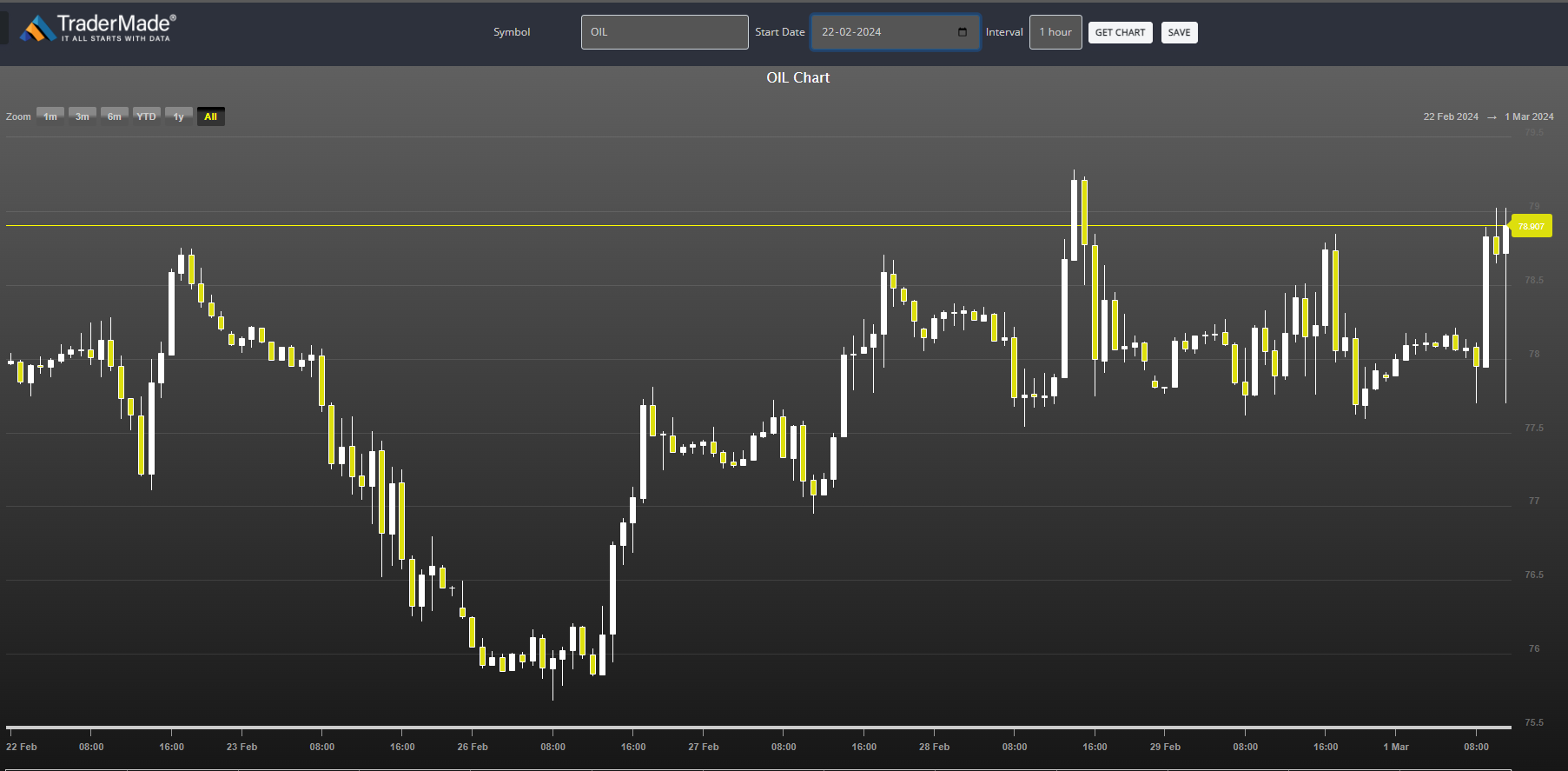
Crude Oil Prices Hold Steady Amidst Mixed Signals
London: 1 March 2024 (TraderMade): Awaiting a verdict from the world's top oil producers, crude prices edge despite a volatile week. Will OPEC+ extend production cuts, or will a potential global slowdown dampen demand? Stay tuned for the latest.
Key Takeaways
- Oil prices edged higher on Friday but remained volatile for the week.
- OPEC+ decision on production cuts for Q2 2024 is the primary market focus.
- Potential extension of cuts could push prices above $80 per barrel.
- Mixed demand-supply signals create uncertainty: Easing US inflation and potential Fed rate cut could boost demand. Yet, rising US production and global economic slowdown concerns weigh on prices.
- WTI crude (OIL) ended the week slightly higher but struggled to hold above $79 per barrel.
Oil Markets Await OPEC+ Decision
Crude oil prices edged higher on Friday, on track for a weekly gain, as investors awaited the crucial decision by the OPEC+ group of oil producers on their production strategy for the second quarter of 2024.
Key Factors Influencing Oil Prices
Potential Extension of OPEC+ Production Cuts
The market is anticipating the continuation of production cuts implemented by OPEC+ beyond the first quarter, potentially until the end of 2024. This expectation is supporting oil prices above $80 per barrel.
Strong US Inflation Data
While Chinese manufacturing activity contracted in February, easing concerns about global demand, US inflation data aligned with expectations, reinforcing the possibility of a June interest rate cut by the Federal Reserve. This could boost fuel demand in the US, the world's largest oil consumer.
Mixed Supply and Demand Signals
Record-high US production and higher output from OPEC suggest a potential increase in global oil supply, while a recessionary outlook in some major economies like Japan, the UK, and the Eurozone raises concerns about lower demand.
WTI Crude (OIL) Weekly Performance Analysis (22 February - 1 March 2024)
A Volatile Week with Modest Gains
WTI crude oil prices experienced a volatile week, ending with a modest gain of approximately 1.06% compared to the closing price on 22 February. Here's a breakdown of the key observations:
- Opening and Closing: The week started with a closing price of $78.21 on 22 February and ended at $79.03 on 1 March.
- Intra-week Movement: The price fluctuated significantly throughout the week, with intra-week highs reaching $79.28 on 28 February and lows of $75.68 on 26 February.
- Mixed Cues: Various conflicting factors influenced the price movement. Positive factors included expectations of continued production cuts by OPEC+ and easing concerns about US inflation. However, the fears of a potential global economic slowdown and rising US oil production countered the elements.

Overall, the week's price action for WTI crude oil was characterized by volatility, with the upward momentum limited by countervailing forces. The direction of oil prices will likely depend on the outcome of the OPEC+ meeting in early March and developments on the global economic front.
WTI Above 200-Day SMA
West Texas Intermediate (WTI) crude oil prices found support near the technically significant 200-day simple moving average (SMA) on Friday, snapping a two-day losing streak. This technical indicator suggests a potential for further near-term gains.
Price Movement and Outlook
Despite the intraday uptick, oil prices remained volatile throughout the week, with WTI struggling to hold above $79 per barrel. While the commodity is on track for a weekly gain, the mixed demand-supply cues and uncertain economic outlook keep a lid on significant price increases.
Summary
The oil market is in a holding pattern, balancing the potential extension of OPEC+ production cuts with concerns about global economic growth and rising US oil production. The upcoming decision by OPEC+ and further developments on the economic front will be crucial in determining the future direction of oil prices.



